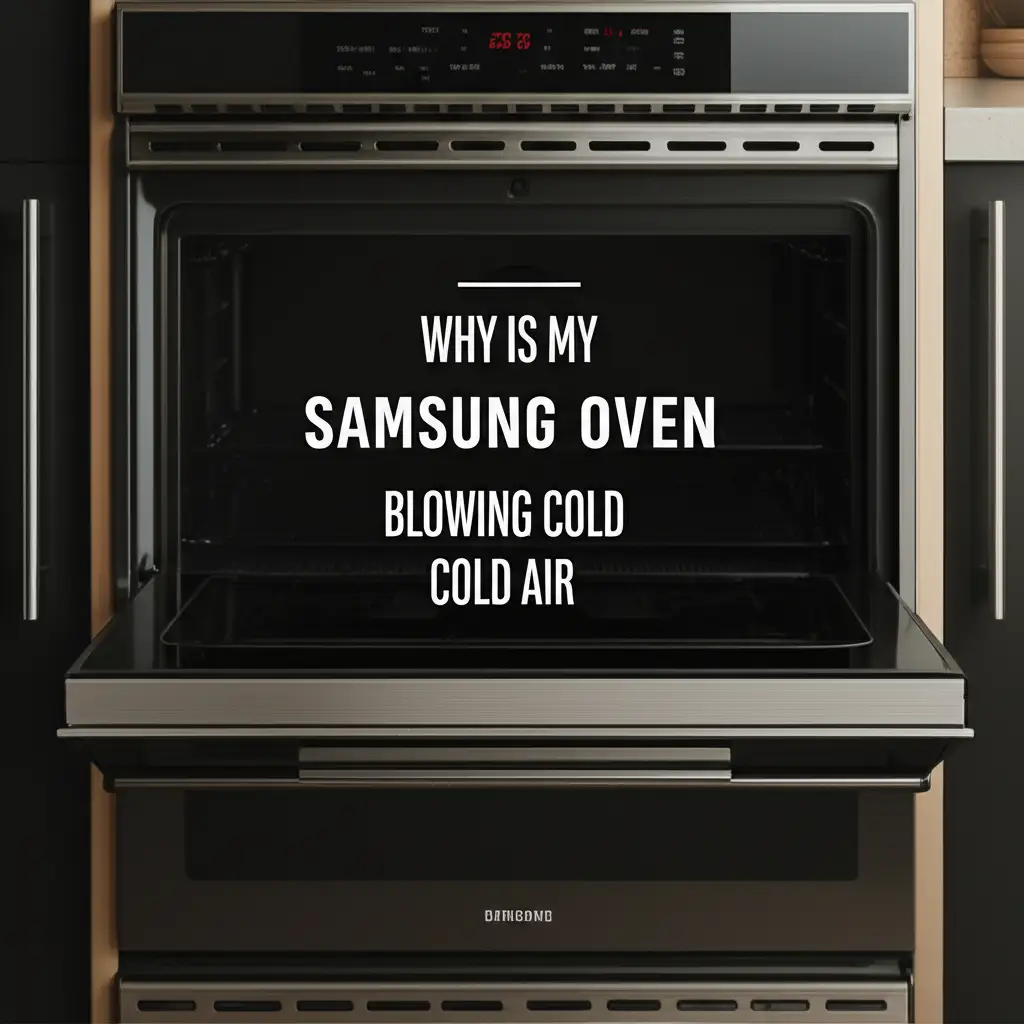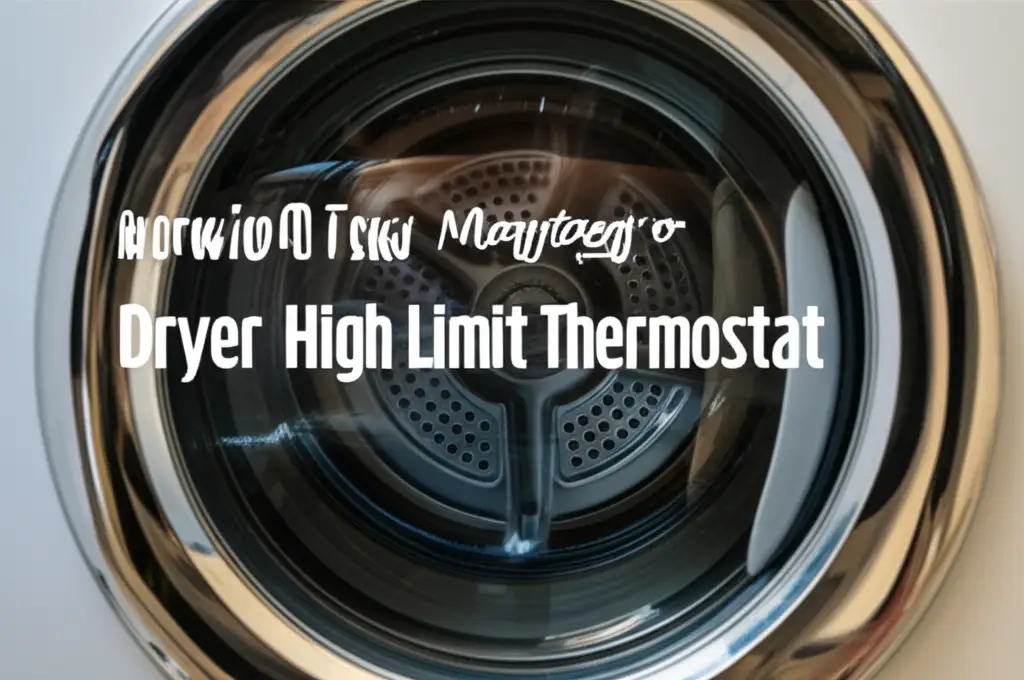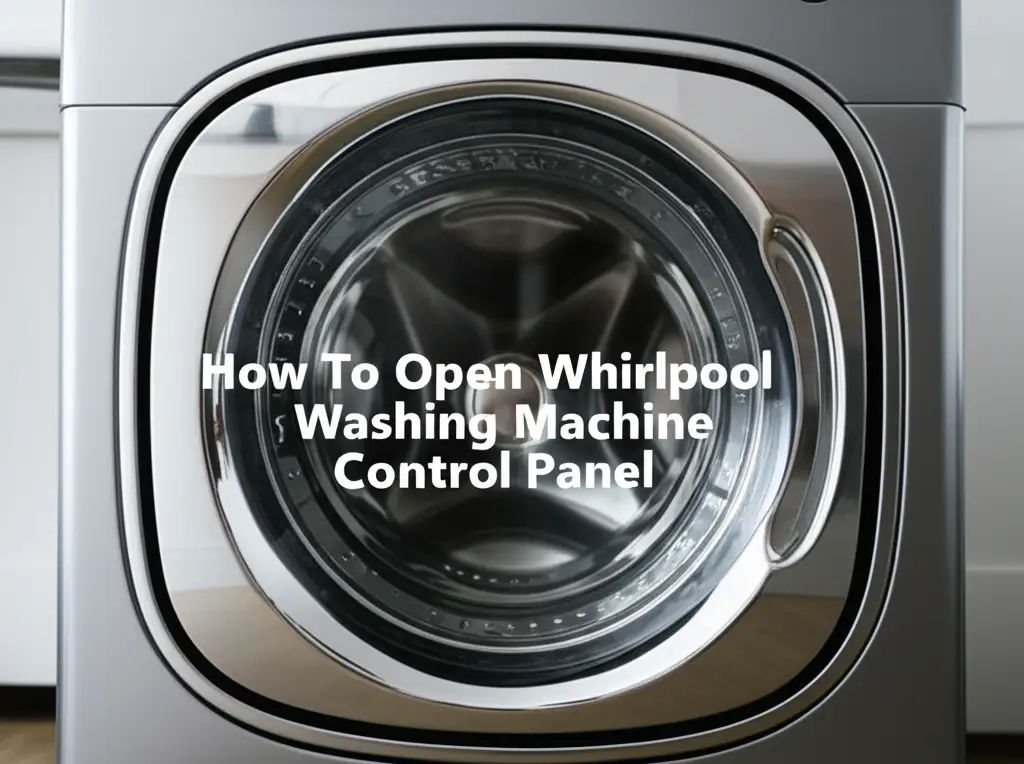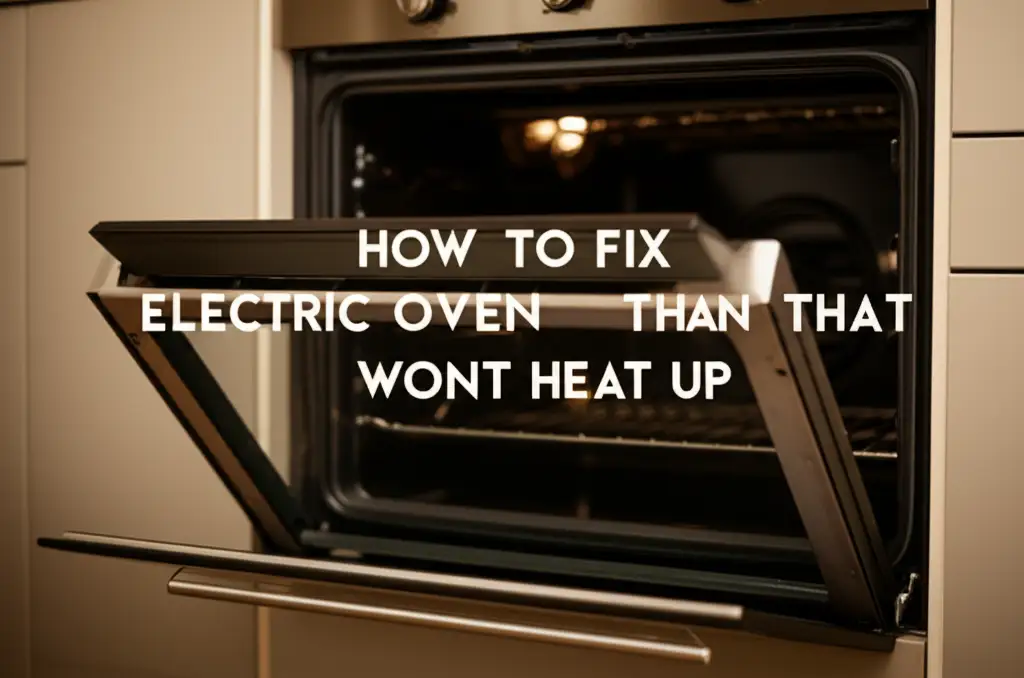· Katria Melrose · Home Appliance Repair · 12 min read
Why Is My Whirlpool Dryer Blowing Cold Air
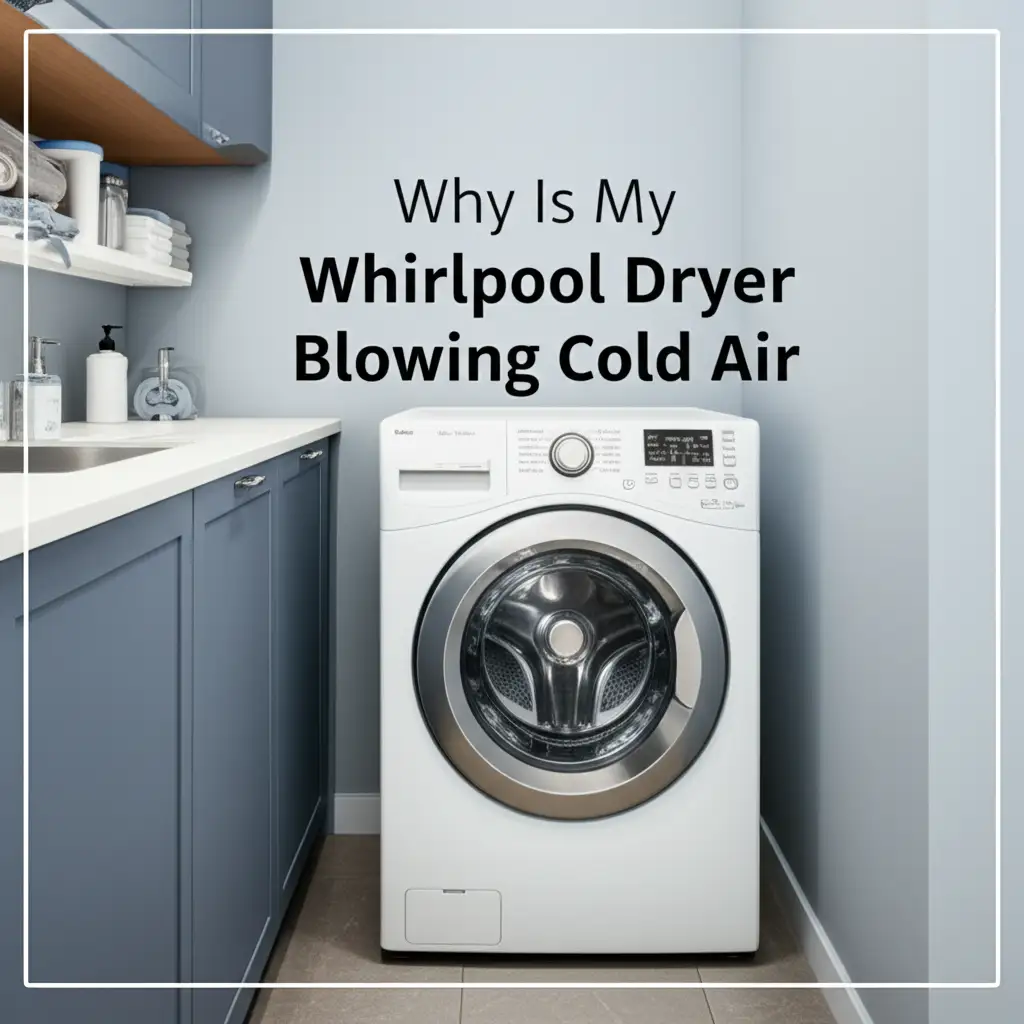
Troubleshooting Your Whirlpool Dryer: Why It Blows Cold Air
It is truly frustrating when your dryer stops doing its main job: drying clothes with heat. You load your freshly washed items, set the cycle, and expect warm, fluffy results. Instead, your Whirlpool dryer is blowing cold air, leaving your clothes damp and your laundry pile growing. This common issue signals a problem within your appliance’s heating system or airflow.
I know this situation can feel overwhelming, but many reasons cause a Whirlpool dryer to blow cold air. Often, you can fix these issues yourself without needing a costly service call. We will explore the common culprits, from a faulty heating element to a clogged vent. I will guide you through simple troubleshooting steps. You will learn what parts to check and how to approach common repairs. My goal is to help you get your Whirlpool dryer heating again quickly and efficiently. Let’s get your laundry back on track.
Takeaway
- A Whirlpool dryer blowing cold air usually means a faulty heating component or blocked airflow.
- Check the heating element, thermal fuse, and thermostats first.
- Clean your dryer’s lint screen and exhaust vent regularly to prevent heat issues.
- Sometimes, electrical supply problems or motor faults can stop heat production.
When your Whirlpool dryer blows cold air, it typically means the heating system is not working. Common reasons include a failed heating element, a blown thermal fuse, faulty thermostats, or restricted airflow due to clogged vents. Troubleshooting these parts often helps find and fix the problem.
How Your Whirlpool Dryer Generates Heat
Understanding how your Whirlpool dryer heats clothes helps diagnose why it is blowing cold air. Dryers work by combining heat, airflow, and tumbling action. The heat comes from either an electric heating element or a gas igniter assembly. Airflow moves this heated air through the drum and out the vent.
Electric dryers use a coil that heats up when electricity flows through it. This coil sits inside the dryer’s heating chamber. Air is drawn over this hot coil by a blower fan. The heated air then enters the drum. Gas dryers use a gas valve and an igniter to create a flame. This flame heats a small chamber, and air flows over it, getting hot.
Both types of dryers have thermostats. These parts monitor and control the temperature inside the dryer. They prevent overheating and ensure the dryer reaches the correct temperature. A blower wheel moves air out of the dryer through the exhaust vent. If any of these components fail, or if airflow is blocked, your Whirlpool dryer may stop heating. It will then just blow cold air. This understanding sets the stage for troubleshooting specific components.
Diagnosing a Failed Whirlpool Dryer Heating Element or Igniter
A faulty heating element or igniter is a very common reason your Whirlpool dryer is blowing cold air. These are the primary parts responsible for creating heat. If either fails, your dryer will tumble and blow air, but it will not be hot. I have seen this issue many times.
In electric dryers, the heating element is a coiled wire. It heats up when electric current passes through it. Over time, these coils can break or burn out. You might see a visible break in the coil if you inspect it. Testing the element with a multimeter for continuity is the best way to confirm its condition. No continuity means the element is faulty and needs replacement. This is a common fix for a dryer not heating.
For gas dryers, an igniter lights the gas that produces heat. The igniter is a small, glowing part. If the igniter cracks or burns out, it cannot light the gas. As a result, no heat is produced. You can test the igniter for continuity with a multimeter. A common sign of a failing igniter is a click, but no flame. It means the gas valve is trying to open, but there is no spark. In both electric and gas dryers, if these main heating sources fail, your Whirlpool dryer will continue to run but blow cold air. Replacing these parts can often resolve your dryer’s no-heat issue. I recommend checking for clear instructions on how to do this safely for your specific model. Sometimes, the problem of your Whirlpool dryer running but no heat is directly linked to these components.
Clogged Vents and Lint: Restricting Whirlpool Dryer Heat
One of the most overlooked and dangerous reasons your Whirlpool dryer is blowing cold air is a clogged vent. Lint buildup in the dryer vent system restricts airflow. When airflow is poor, the dryer’s heating element or igniter cannot work efficiently. The dryer tries to heat, but the hot air cannot escape properly. This causes the internal temperature to rise excessively.
The dryer’s safety features, such as thermostats and thermal fuses, will trip. They cut off the heat to prevent overheating and potential fires. This is a crucial safety mechanism. Your dryer will then continue to run, tumbling clothes, but only blowing cold air. It thinks it is too hot, so it stops heating. This protects the appliance and your home.
Regular cleaning of your lint screen is vital, but it is not enough. You also need to clean the dryer’s exhaust ductwork from the back of the dryer to the outside vent hood. Lint can accumulate along the entire length of the duct. I personally make sure to clean mine at least once a year, sometimes more often. A clogged vent also makes your dryer less efficient, increasing drying times and energy costs. You might also notice a burning smell. Cleaning your dryer’s vent system can resolve the cold air issue and improve safety. Learn how to clean your dryer properly to keep it working well. For specific instructions on your appliance, consider resources on how to clean your Whirlpool dryer. This simple maintenance step can save you money and prevent serious problems.
Whirlpool Dryer Thermostats and Thermal Fuses: Key to Heat
Thermostats and thermal fuses are vital safety components in your Whirlpool dryer. They directly impact whether your dryer blows cold air or heats up. These parts monitor temperature and interrupt the circuit if the dryer gets too hot. They protect the dryer from damage and prevent fires.
A dryer typically has two types of thermostats: the cycling thermostat and the high-limit thermostat. The cycling thermostat regulates the temperature inside the dryer drum. It turns the heating element on and off to maintain the selected drying temperature. If this thermostat fails, it might not signal the heating element to turn on, or it might cut off the heat too soon. This leads to clothes not drying properly or the dryer blowing only cold air.
The high-limit thermostat is a safety device. It monitors the temperature around the heating element. If the temperature exceeds a safe limit, this thermostat trips, cutting power to the heating element. It resets once the dryer cools down. However, if it trips repeatedly, it suggests a bigger problem, like a clogged vent causing overheating.
The thermal fuse is a one-time safety device. It is designed to blow if the dryer overheats significantly. Once it blows, it creates an open circuit, completely cutting power to the heating element. Unlike a thermostat, a thermal fuse does not reset. If your thermal fuse has blown, your dryer will run but produce no heat. You must replace it. A blown thermal fuse often indicates an underlying issue, such as restricted airflow. I have seen many instances where a Whirlpool dryer keeps blowing the thermal fuse because of a hidden vent clog. Always check your vents thoroughly if a thermal fuse blows.
Motor and Airflow: How They Affect Your Whirlpool Dryer’s Heat
The motor and blower wheel play an indirect but important role in your Whirlpool dryer’s ability to produce heat. While they do not generate heat themselves, they are crucial for proper airflow. Without adequate airflow, the heating system cannot function correctly. Your dryer might end up blowing cold air.
The motor powers both the drum’s rotation and the blower wheel. If the motor fails, the dryer might not start at all, or the drum might not turn. However, sometimes the motor can run, but it might not have enough power to turn the blower wheel effectively. A weak motor could still spin the drum slowly. But it would fail to move enough air across the heating element. This reduces heat transfer to the clothes.
The blower wheel, also known as the fan, pulls air into the dryer, through the heating element, and out the exhaust vent. If the blower wheel is damaged, loose, or obstructed, it cannot move air properly. Common issues include lint buildup on the blower wheel itself or a broken blade. When airflow is poor, the hot air gets trapped near the heating element. This causes the element to overheat. As a safety measure, the high-limit thermostat or thermal fuse will trip, cutting off the heat. The dryer will continue to run, but without heat, it will just blow cold air. Checking the blower wheel for obstructions or damage is a good step. If your Whirlpool dryer turns on but does not start, it could be a motor issue affecting more than just heat. This can be a complex diagnosis, often requiring professional help if the motor is the culprit.
Electronic Controls and Power Supply for Whirlpool Dryer Heat
Sometimes, the reason your Whirlpool dryer is blowing cold air lies in its electronic controls or power supply. These components manage all functions, including heat. A problem with either can disrupt the heating cycle.
Modern Whirlpool dryers use sophisticated control boards and moisture sensors. The control board is the dryer’s “brain.” It receives signals from thermostats and sensors and then sends commands to components like the heating element. If the control board malfunctions, it might not send the signal for the heating element to turn on. This results in the dryer running, but without heat. Control board issues are less common than component failures. However, they can be difficult to diagnose without specialized knowledge. You might also notice strange error codes on the display.
Moisture sensors detect how wet your clothes are. They tell the control board when the clothes are dry. If these sensors are dirty or faulty, they might inaccurately detect that clothes are dry. This can cause the dryer to shorten the heating cycle or even stop heating prematurely. Cleaning the moisture sensor bars inside the drum is a simple maintenance step.
A complete lack of heat could also relate to your home’s power supply. Electric dryers need a 240-volt power supply. This requires two dedicated circuit breakers. If one of these breakers trips, or if there is an issue with the power outlet, only half the power might reach the dryer. The dryer might still turn on and tumble, but the heating element will not receive enough voltage to heat up. I always check the circuit breakers first for any appliance not working right. Ensure both breakers for your dryer are in the “on” position. If they keep tripping, call an electrician. For gas dryers, check that the gas supply valve is fully open and that your home’s gas line is working correctly. These electrical and electronic checks are crucial for a fully functional dryer.
Common Questions About Whirlpool Dryer Cold Air Issues
Can I use my dryer if it’s blowing cold air?
You can use your dryer even if it is blowing cold air, but it will not dry your clothes. The drum will tumble and air will circulate, but without heat, your clothes will remain damp. Using it this way wastes electricity and does not achieve the desired result. It is best to diagnose and fix the heating issue before running it.
How much does it cost to fix a dryer blowing cold air?
The cost to fix a dryer blowing cold air varies widely. Simple fixes like cleaning a clogged vent might cost nothing but your time. Replacing a thermal fuse or a thermostat might be $20-$50 for the part. A new heating element can cost $50-$150. If you hire a professional, labor costs add $100-$300 or more, depending on the repair complexity.
How often should I clean my dryer vents?
You should clean your dryer’s lint screen after every single load. The main exhaust vent system, from the dryer to the outside, should be cleaned at least once a year. If you use your dryer heavily or have pets that shed a lot, you might need to clean the vent every six months. Regular cleaning prevents cold air issues and reduces fire risk.
What is a thermal fuse in a dryer?
A thermal fuse in a dryer is a safety device. It is a small component designed to blow and cut off electrical power to the heating element if the dryer overheats. This prevents the dryer from becoming a fire hazard. Once a thermal fuse blows, it must be replaced; it does not reset itself.
How do I reset my Whirlpool dryer?
Many Whirlpool dryers do not have a specific “reset” button. To reset it, you can unplug the dryer from the wall outlet for 5-10 minutes. Then, plug it back in. This simple power cycle can sometimes clear minor electronic glitches. For issues like a tripped thermal fuse, a physical repair and replacement of the part are needed, not just a reset.
Conclusion
Having your Whirlpool dryer blowing cold air is a common problem, but it is often fixable. We have covered the main reasons this happens, from a failed heating element or igniter to dangerous lint blockages in the dryer vent. We also discussed the roles of thermostats, thermal fuses, motors, and electronic controls. By understanding these components, you are empowered to perform basic troubleshooting yourself.
Always remember safety first. Unplug your dryer before inspecting or replacing any parts. Regularly cleaning your lint screen and dryer vents is a simple step that can prevent many heat-related issues. If you have checked the common culprits and your Whirlpool dryer is still blowing cold air, consider consulting a qualified appliance technician. They can diagnose more complex electrical or control board problems. With a bit of patience and the right information, you can often get your dryer back to its proper heating function, making your laundry routine smooth again. Get your clothes warm and dry once more!
- Whirlpool dryer
- dryer repair
- no heat
- dryer troubleshooting
- heating element
- thermal fuse
- clogged dryer vent


